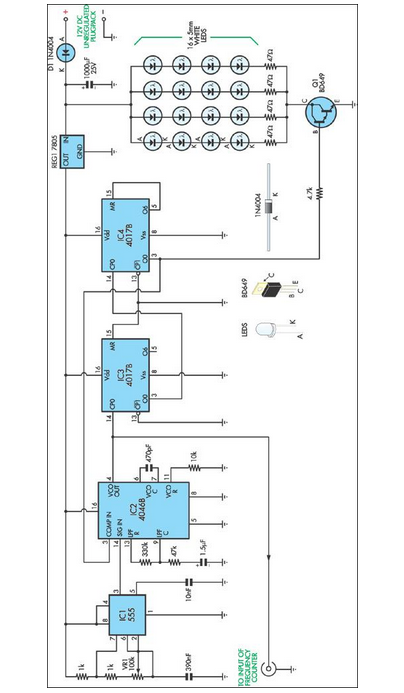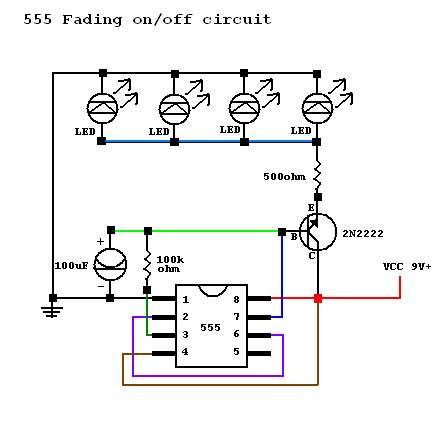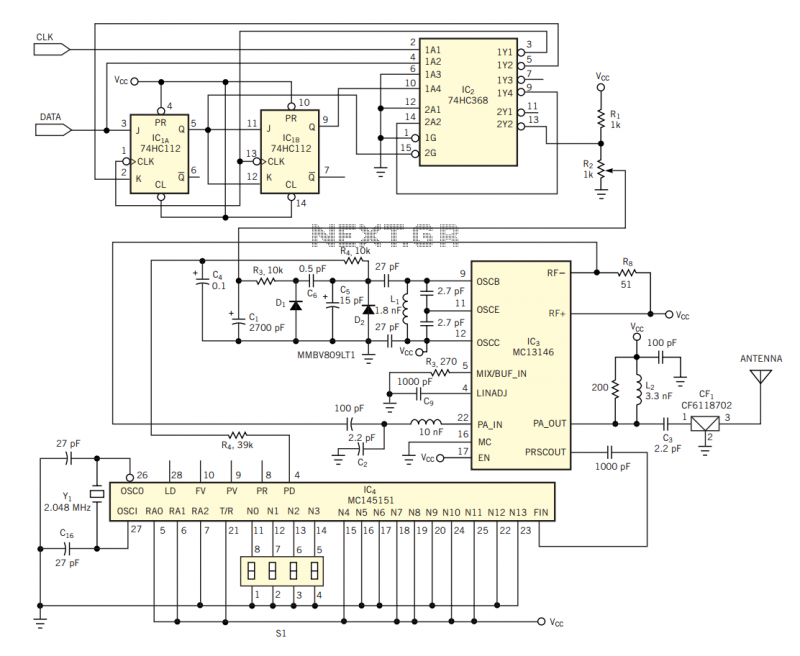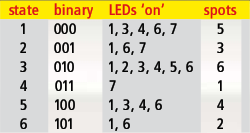
stroboscope uses white leds

This stroboscope circuit utilizes 16 high-brightness white LEDs housed within a torch structure. It also offers a signal output to a frequency counter to indicate revolutions per minute (RPM).
The stroboscope circuit is designed to provide visual indication of rotating objects through the use of high-intensity white LEDs. The circuit includes a microcontroller or timer IC to generate a pulse-width modulation (PWM) signal that controls the LEDs. The frequency of the PWM signal can be adjusted to match the rotational speed of the object being observed, allowing for effective stroboscopic effects.
The 16 white LEDs are arranged in a manner that maximizes light output and coverage. The LEDs are powered by a suitable power supply, ensuring that they operate at their optimal brightness. A heat sink may be incorporated to dissipate excess heat generated during operation, thus prolonging the lifespan of the LEDs.
The signal output to the frequency counter is typically derived from the same PWM signal driving the LEDs. This output can be connected to a microcontroller or dedicated frequency counter module, allowing for real-time measurement of the RPM of the rotating object. The circuit may include additional components such as resistors, capacitors, and transistors to ensure proper signal conditioning and LED driving capabilities.
Overall, this stroboscope circuit is suitable for various applications, including mechanical diagnostics, motion analysis, and educational demonstrations, where the visualization of fast-moving objects is required.This stroboscope circuit uses 16 high-brightness white LEDs in a torch housing and it provides a signal output to a frequency counter to provide a rev cou.. 🔗 External reference
The stroboscope circuit is designed to provide visual indication of rotating objects through the use of high-intensity white LEDs. The circuit includes a microcontroller or timer IC to generate a pulse-width modulation (PWM) signal that controls the LEDs. The frequency of the PWM signal can be adjusted to match the rotational speed of the object being observed, allowing for effective stroboscopic effects.
The 16 white LEDs are arranged in a manner that maximizes light output and coverage. The LEDs are powered by a suitable power supply, ensuring that they operate at their optimal brightness. A heat sink may be incorporated to dissipate excess heat generated during operation, thus prolonging the lifespan of the LEDs.
The signal output to the frequency counter is typically derived from the same PWM signal driving the LEDs. This output can be connected to a microcontroller or dedicated frequency counter module, allowing for real-time measurement of the RPM of the rotating object. The circuit may include additional components such as resistors, capacitors, and transistors to ensure proper signal conditioning and LED driving capabilities.
Overall, this stroboscope circuit is suitable for various applications, including mechanical diagnostics, motion analysis, and educational demonstrations, where the visualization of fast-moving objects is required.This stroboscope circuit uses 16 high-brightness white LEDs in a torch housing and it provides a signal output to a frequency counter to provide a rev cou.. 🔗 External reference





